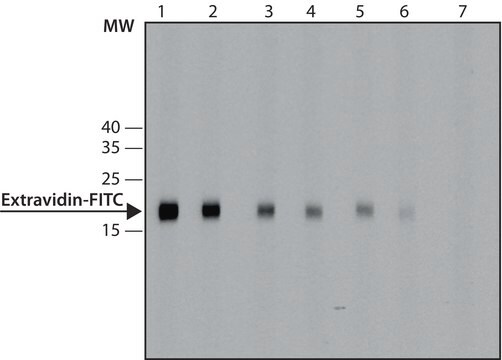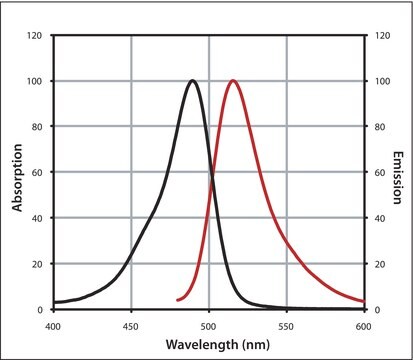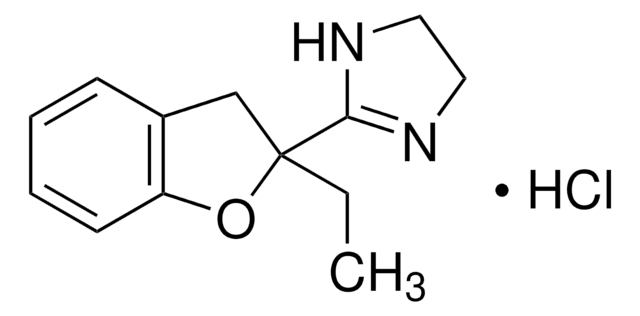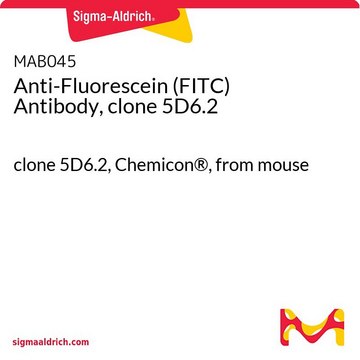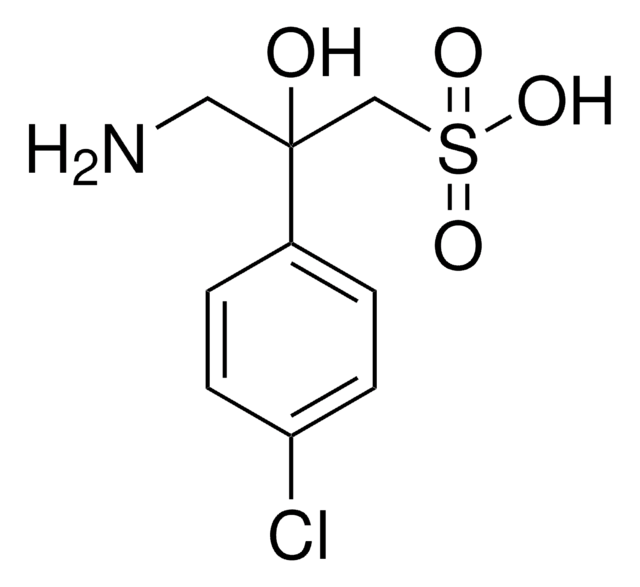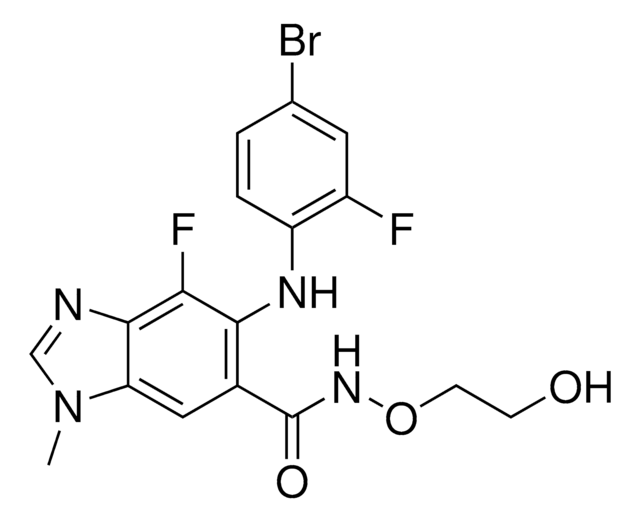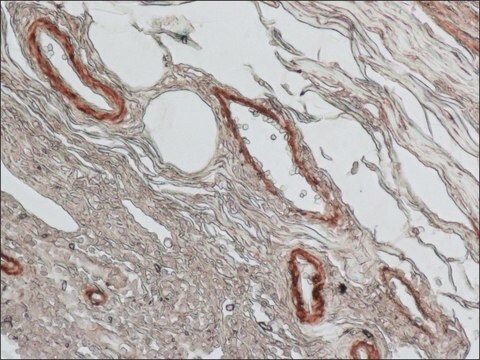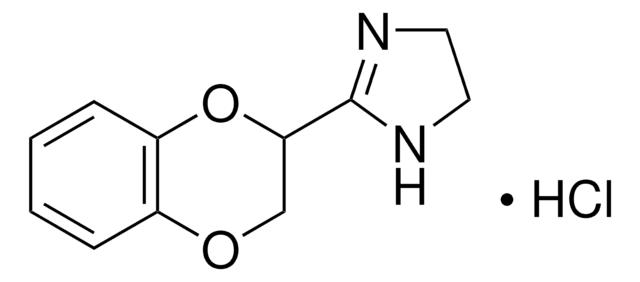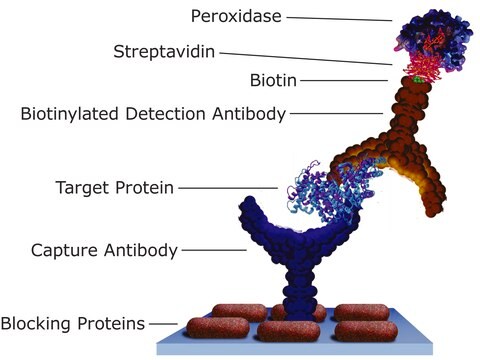F5636
Monoclonal Anti-FITC antibody produced in mouse
clone FL-D6, ascites fluid
Synonym(s):
Monoclonal Anti-FITC
Sign Into View Organizational & Contract Pricing
All Photos(1)
About This Item
UNSPSC Code:
12352203
NACRES:
NA.46
Recommended Products
biological source
mouse
Quality Level
conjugate
unconjugated
antibody form
ascites fluid
antibody product type
primary antibodies
clone
FL-D6, monoclonal
contains
15 mM sodium azide
technique(s)
indirect ELISA: 1:2,500 using FITC-conjugate
indirect immunofluorescence: suitable
isotype
IgG1
shipped in
dry ice
storage temp.
−20°C
target post-translational modification
unmodified
Looking for similar products? Visit Product Comparison Guide
General description
FITC (fluorescein isothiocyanate) is a fluorochrome dye that absorbs ultraviolet or blue light causing molecules to become excited and emit a visible yellow-green light. This emission ceases upon removal of the light causing the excitation. Fluorochrome labeling provides rapid, accurate localization of antigen-antibody interaction when one of the reactants is part of a cell, tissue or other biological structure. FITC is a commonly used marker for antibodies in immunofluorescent techniques because the conjugation of FITC to proteins is relatively easy and generally does not destroy the biological activity of the labeled protein. FITC is widely used as a hapten to label different proteins. Antibodies to FITC are used to identify FITC labeled proteins and as models to study the mechanism of antibody response to a well defined hapten.
Specificity
Mouse monoclonal clone FL-D6 anti-FITC antibody will react with either free or conjugated FITC. The antibody does not react with bound or free TRITC (tetramethylrhodamine isothiocyanate).
The antibody reacts with both free and conjugated fluorescein isothiocyanate (FITC).
Immunogen
FITC-BSA conjugate
Application
Mouse monoclonal clone FL-D6 anti-FITC antibody may be used for the detection of FITC and as a universal indicator reagent for bridging FITC with other immunochemical reagents. It may be used in ELISA, competitive ELISA and immunofluorescent techniques. A FITC Anti-FITC system has been used in the amplification of signal in immunofluorescent detection and as a means of separating bound from free tracer by affinity chromatography. The antibody can also be used to isolate cells that have an FITC-labeled ligand on their surface.
Disclaimer
Unless otherwise stated in our catalog or other company documentation accompanying the product(s), our products are intended for research use only and are not to be used for any other purpose, which includes but is not limited to, unauthorized commercial uses, in vitro diagnostic uses, ex vivo or in vivo therapeutic uses or any type of consumption or application to humans or animals.
Not finding the right product?
Try our Product Selector Tool.
Storage Class Code
10 - Combustible liquids
WGK
nwg
Flash Point(F)
Not applicable
Flash Point(C)
Not applicable
Choose from one of the most recent versions:
Already Own This Product?
Find documentation for the products that you have recently purchased in the Document Library.
Customers Also Viewed
Hiam Abdala-Valencia et al.
Journal of immunology (Baltimore, Md. : 1950), 177(9), 6379-6387 (2006-10-24)
Lymphocyte binding to VCAM-1 activates endothelial cell NADPH oxidase, resulting in the generation of 1 muM H(2)O(2). This is required for VCAM-1-dependent lymphocyte migration. In this study, we identified a role for protein kinase Calpha (PKCalpha) in VCAM-1 signal transduction
Pedro M Costa et al.
Molecular therapy. Nucleic acids, 2, e100-e100 (2013-06-20)
The present work aimed at the development and application of a lipid-based nanocarrier for targeted delivery of nucleic acids to glioblastoma (GBM). For this purpose, chlorotoxin (CTX), a peptide reported to bind selectively to glioma cells while showing no affinity
Tracy L Deem et al.
Journal of immunology (Baltimore, Md. : 1950), 178(6), 3865-3873 (2007-03-07)
Lymphocytes migrate from the blood into tissue by binding to and migrating across endothelial cells. One of the endothelial cell adhesion molecules that mediate lymphocyte binding is VCAM-1. We have reported that binding to VCAM-1 activates endothelial cell NADPH oxidase
Sandrine Tury et al.
Oncotarget, 7(51), 85124-85141 (2016-11-12)
COX-2 expression level and prognostic value are still a matter of debate in breast cancer (BC). We addressed these points in the context of PIK3CA mutational status. Based on an interesting study of aspirin efficacy in colorectal cancer, we hypothesized
Dongxi Xiang et al.
Theranostics, 5(10), 1083-1097 (2015-07-23)
Insufficient penetration of therapeutic agents into tumor tissues results in inadequate drug distribution and lower intracellular concentration of drugs, leading to the increase of drug resistance and resultant failure of cancer treatment. Targeted drug delivery to solid tumors followed by
Our team of scientists has experience in all areas of research including Life Science, Material Science, Chemical Synthesis, Chromatography, Analytical and many others.
Contact Technical Service